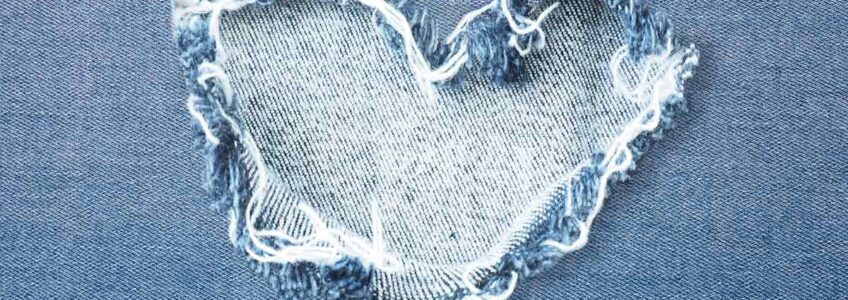A very versatile fabric, that contrary to belief, is not used exclusively in the field of fashion. Jeans fabric can be used even in furnishing and in the field of household linen.
Originallyblue jeans fabricwas made with a linen warp and cotton weft: today it is mainly made from cotton combined with artificial fibers Its main qualities are robustness and resistance, which are combined with a renowned adaptability.
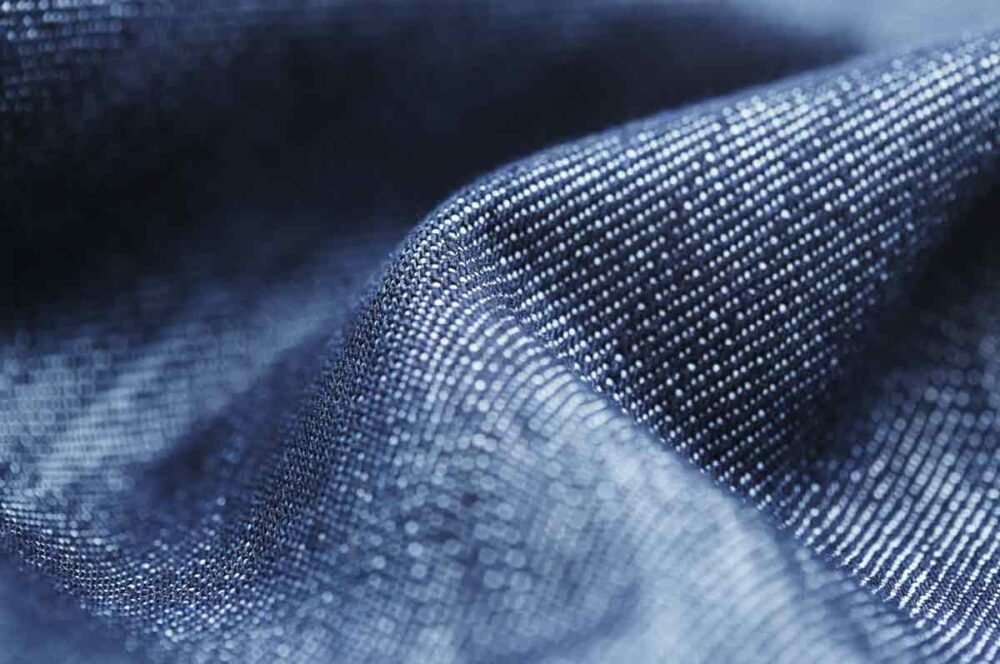
Jeans or Denim? History and differences
What do we call the fabric for jeans? To indicate the material in which this type of trousers is made, we use the term ‘denim’, yet jeans and denim were not always synonymous. According to historians, the difference between the two lies mainly in the color of the fibers used. In denim the thread from the warp was blue, while that of the weft was white or écru. In jeans the weft and warp were of the same color, almost always blue.
Confirming the theory of colors for jeans fabric is a book that is valued as an actual manual in the fabric industry, ‘Stample cotton fabrics’, by John Hoye, published in America in 1942 The text focuses on jeans like a cotton twill, with warp and weft of the same color, used at the time to make trousers, sports clothes, uniforms for doctors and nurses and to line shoes and boots. Denim has always been more suitable for the making of heavy work clothes.
The history of cotton jeans fabric begins in Italy, more specifically, in Chieri, in the province of Turin. This is where in the fifteenth century a particular type of blue ‘fustagno’ fabric was produced, very resistant and dyed with the use of woad. At the same time in the French city of Nimes, a similar fabric which took the name of denim was being developed and produced. What about the fabric produced in Chieri? From Piedmont it arrived in the place where it would be commercialized, the port of Genoa. Here the canvas was used to produce the bags for the sails of the ships or to cover the goods at the port. Over time the Americans changed the name of the material that was known as the blue of Genoa, or rather, ‘bleu de Genes’, and the term blue jeans was born.
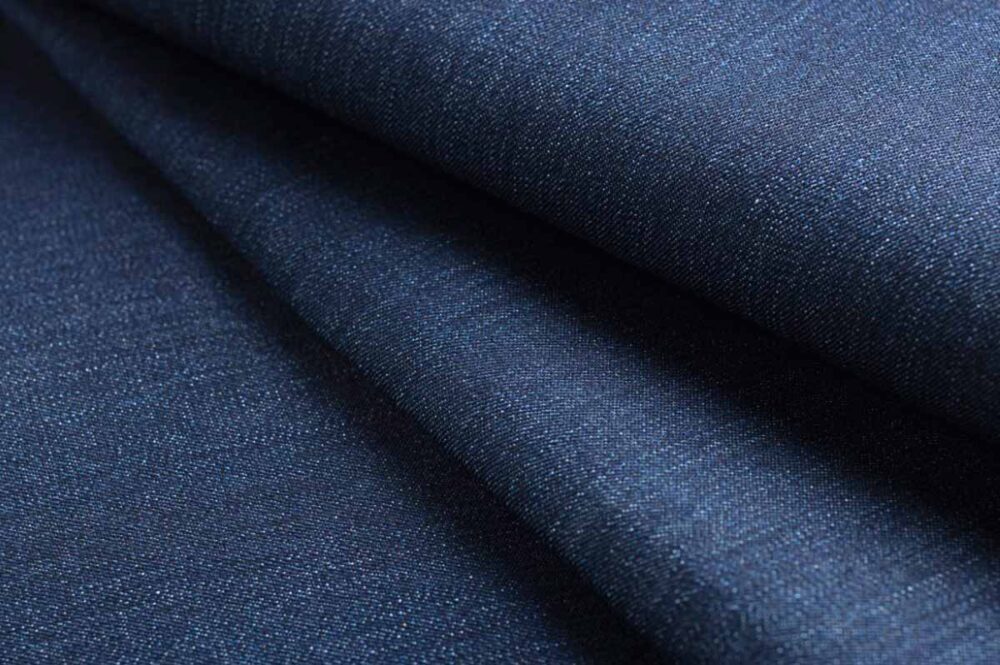
Jean’s fabric: composition and characteristics
Denim or jeans fabric is composed of cotton with a tight structure, sturdy, worked on a twill structure, and sometimes even on “broken rope”. The warp yarn is twisted, with a dyed chain, while the weft yarn is in carded yarn of the same color. It is produced in different weights always measured in “ounces” (the “classic” weight is 14-14.5 ounces). Above this weight limit it would be considered as heavy denim fabric, while below it would be considered as light jeans fabrics.
As for the composition of the fabric, today the stretch jeans fabric, which is made primarily of cotton and a 2 or 3% of elastane, is very widespread A very comfortable fabric designed to perfectly fit the body and enhance forms, ensuring maximum freedom of movement. Jeans of light stretch fabric are composed of 20.30% of elastane and are used mainly in women’s clothing.
Jeans of light stretch fabric are composed of 20.30% of elastane and are used mainly in women’s clothing. The first step is untangling the cotton fiber, which is cleaned and stirred. We then move on to the carding phase, which is needed to separate the fibers and to form large cords that are pulled and twisted. The fibers pass into a centrifuge machine and are twisted to form a continuous thread that is collected on coils.
Denim fabric is dyed when it is still in thread form, before the weaving: the color is laid on the outside of the threads, through a process of bathing and oxidation that leaves the inside of the threads natural white. The fabrics come to life on the frame: each thread passes through a ring, called a ‘liccio’, which can be raised and lowered mechanically. As soon as it is made, the jeans fabric is very rigid and tightens by 10 to 12% after the first wash.
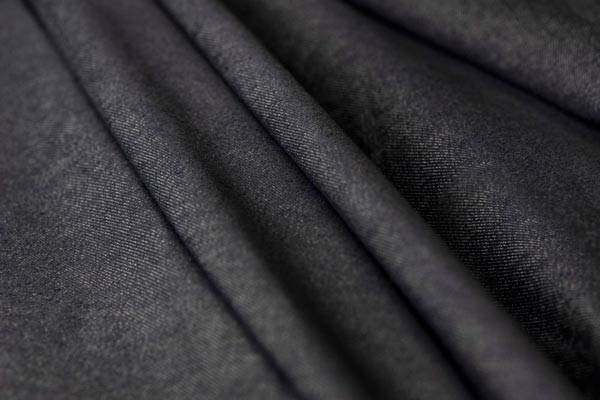
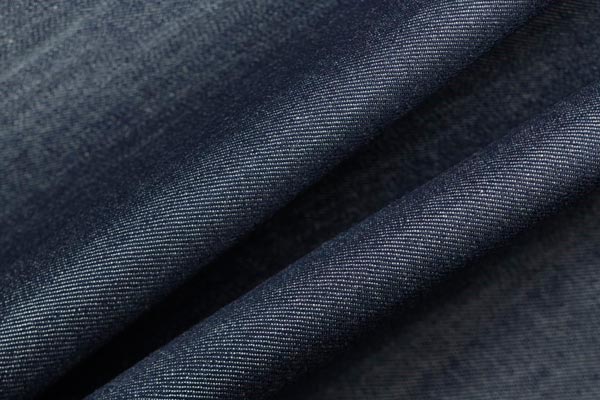
Denim fabric for jeans by the meter is used for multiple purposes. Mainly for the making of the characteristic garments known as “blue jeans”, but also in jackets, overalls, skirts, and accessories, such as bags and shoes. This fabric can be worked with different treatments to achieve the desired appearance: from simple washing in water to washing with chlorine, from washing with pumice stone to washing with the aim of giving the fabric a specific color, like when making the white jeans fabric. So how do you get the different colors for jeans fabrics? By adding chlorine to the first wash, lighter shades are obtained (known as bleached and super-bleached jeans), and by tying the fabric during washing, irregular patches of color are obtained (known as tie-bleached). To obtain an aged and worn-out effect on an industrial scale, washing with pumice stones (stone-washed), with chlorine (stone-bleached) or other bleaching substances (marbled or Klondyke) are used.
To simulate an aging effect even better, one can adopt the ‘used’ effect, by using sandpaper or bleaching chemicals only on some parts (known as used-stone or used-bleached jeans).
Embroidered jeans fabriccan also be found in the household linen sector, as a fabric for bed linen, tablecloths, sofa covers, puffs, armchairs, and chairs, depending on individual taste. The jeans fabric is also widely used in the industrial sector, in some types of uniforms, for tarpaulins, curtains and much more.
For a truly efficient guide in the world of denim fabrics just trust Manifattura Foderami Cimmino. A wide selection of jeans fabrics for different purposes awaits you, with specific materials to create iconic clothing and trendy household linen elements.



